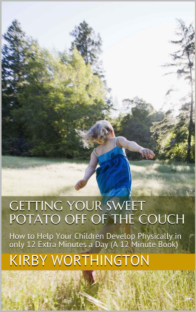What do you do?
- Everyone sits on the floor with hands in laps, legs crossed. Preschool teachers often call this sitting position “criss-cross applesauce.” Children face the adult.
- Hold your hands about shoulder height in front of your body, elbows bent, fingers spread wide. Tell the children, “My hands are awake. Show me your ‘awake’ hands. That’s it!”
- Then place your hands in your lap and say, “My hands are asleep now. Show me your ‘asleep’ hands.”
- “Watch and listen carefully. I’m going to try to fool you.” Start out giving the children (or child if doing this with only one child) plenty of time to copy you. After they’ve had good success, go faster.
- “My hands are-wait a few seconds for suspense-awake.” Hold yours in awake position. “They’re asleep!” (Put them in your lap.) “You’re listening so well!” “Hands are-awake.” (You guessed it: put your hands in the asleep position and see whether they were tricked.) Then, “Hands are-awake. (Pause for response.) Now, they’re awake.” Sometimes give the same direction twice in a row to keep them watching and listening carefully. Sometimes give two directions fast, one after another. “They’re asleep, they’re awake.” Do not point out, and embarrass, those who make mistakes.
- I always end a segment saying, “Hands (or whatever body part you are doing) are really, really, really awake.” I spread my fingers in the awake position and then lift my hands as far above my head as I can stretch. Remain sitting. “Oooh, that feels good! Now, they’re asleep.” It helps to end with body parts “asleep.”
Variations:
You can wake up almost any body part. Because young children love repetition, I start with the hands each time, and then vary what body part we do next. Ask them periodically, “Which body part shall we wake up now?” Sometimes they surprise you, and you find yourself wondering how to make your ears look “awake,” but it does inspire creativity. Some examples:
- Elbows: Touch your shoulders, right hand on right shoulder, left hand on left shoulder. Elbows down are asleep. Elbows pointed to the ceiling are awake.
- Knees: Sitting down, begin with your legs stretched straight out in front of you, feet together. Knees are “awake” when you bend them, pulling your feet up close to your body, knees pointed toward the ceiling. Put legs back down on the floor and they are “asleep.”
- Mouth: Mouth opened as wide as you can is “awake.” Mouth closed is “asleep.”
- Tummy: Sit, knees bent, arms behind. Lift tummy for “awake.” Down = “asleep.”
- Ears (just in case you were wondering): Hands cupped behind the ears for “awake.” Hands squeezing the ears shut for “asleep.”

